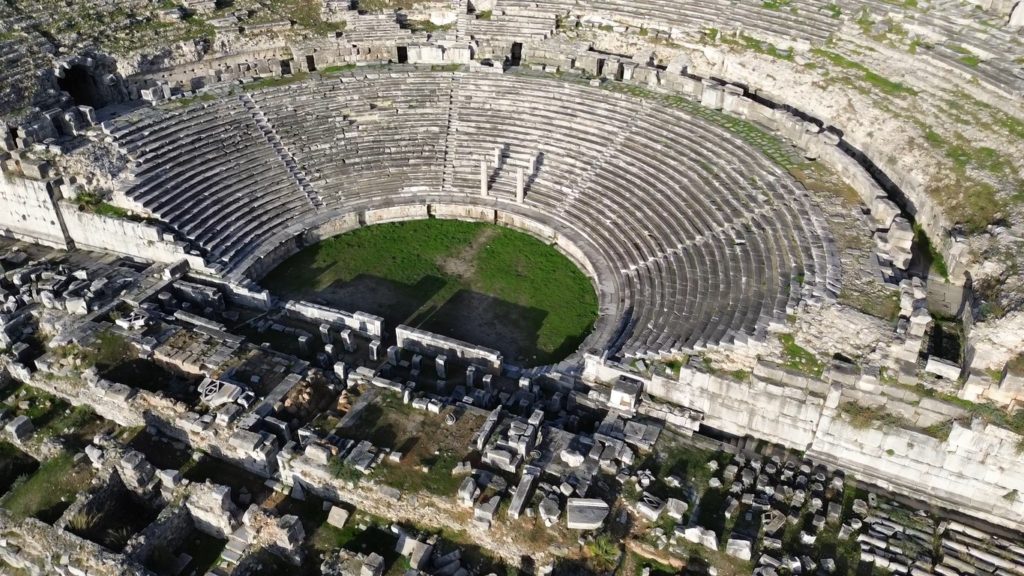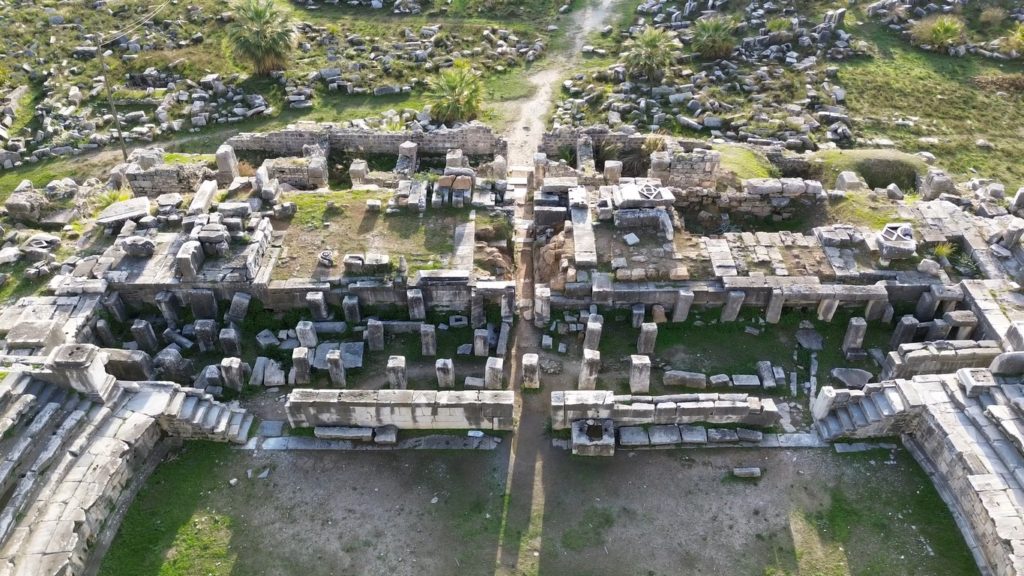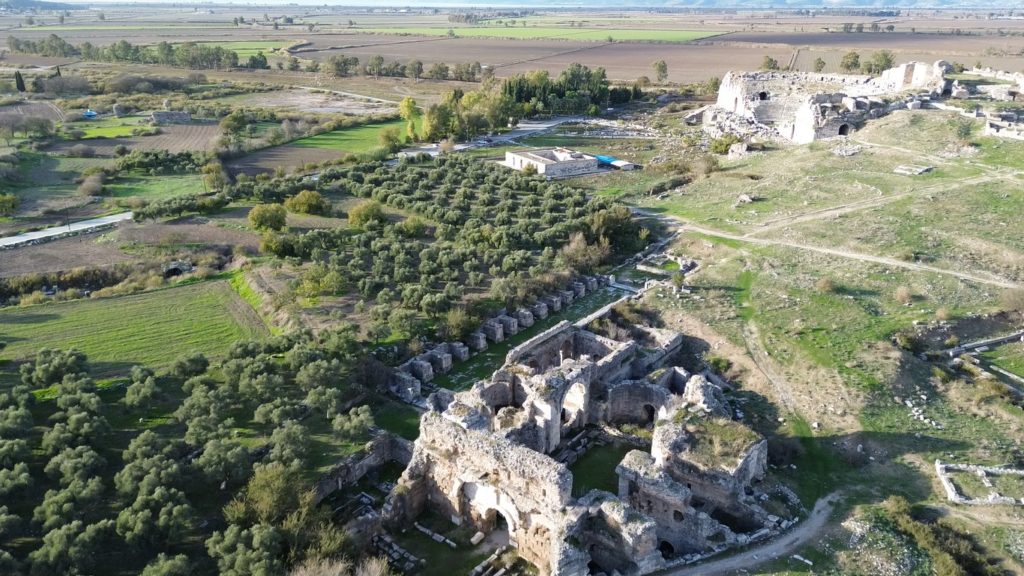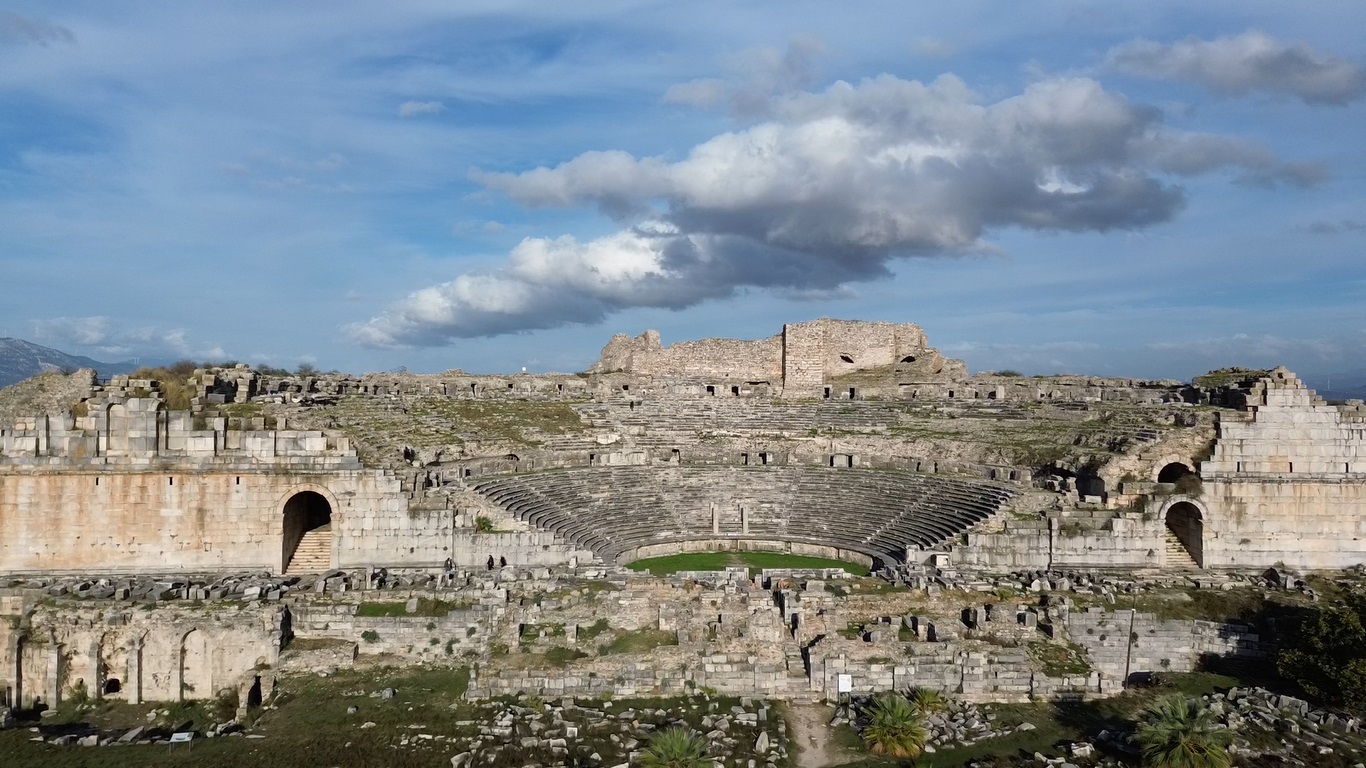Welcome to the captivating Ancient City of Miletus, a time-honoured site tracing its origins back to the 2nd millennium BC. Founded by immigrants from Crete under Serpedon’s guidance, brother of Crete’s King Minos, Miletus thrived through diverse epochs—Mycenaean, Achaean, and the grand sweep of Archaic, Hellenistic, Roman, Eastern Roman, Menteşe Principality, and Ottoman periods.
During its pinnacle in the Archaic Age, Miletus stood tall as the esteemed capital of the Ionian Confederation—a bustling port city radiating significance. Over time, the city’s prominence endured through the Hellenistic, Roman, and Eastern Roman periods. However, as the sea withdrew, Miletus began to gradually lose its significance.

The turning point arrived after the Battle of Manzikert in 1071 when the Great Seljuk Sultan Alparslan’s triumph paved the way for Turkish influence in Anatolia. Within a decade, Turkish presence reached the Aegean coast, altering Miletus’ trajectory. Notably, the city underwent a metamorphosis when Orhan, a Menteşe Bey, renamed it Palatia, eventually known as Balat.
By 1424, the Ottoman Sultan Murat II’s conquest incorporated Balat into Ottoman rule, heralding an era of transition. Village life thrived until a seismic event in 1955 led to the abandonment of the Ancient City of Miletus, preserving its ruins and stories for modern explorers.

The visible remains at the Ancient City of Miletus today span the Hellenistic, Roman, Eastern Roman, and Turkish periods. Among these are remnants from the Hellenistic period, including the theatre, Sanctuary of Apollo, Ionic stoa, gymnasium, and South Agora.
The Roman period contributed to structures like the Eastern Roman Bath, Eastern Roman Church, and St. Michael Church. Additionally, there are remnants from the Turkish period, such as the caravanserai, lodge, baths, Kırk Merdivenli Mosque, İlyas Bey Mosque, and Social Complex.

Beyond its architectural marvels, Miletus once served as the pinnacle of philosophy, science, and art. This ancient city fostered renowned thinkers like Thales, Anaximenes, Anaximander, and Hekataios, whose profound contributions reshaped ancient knowledge and expanded the horizons of human understanding across philosophy, science, and art.
Miletus might leave you with a sense of unfulfilled potential as you wander its grounds. The ongoing archaeological endeavours and preservation projects render it a rather disheartening space, where the work seems incomplete. Hopefully, this situation will undergo a positive transformation soon.
